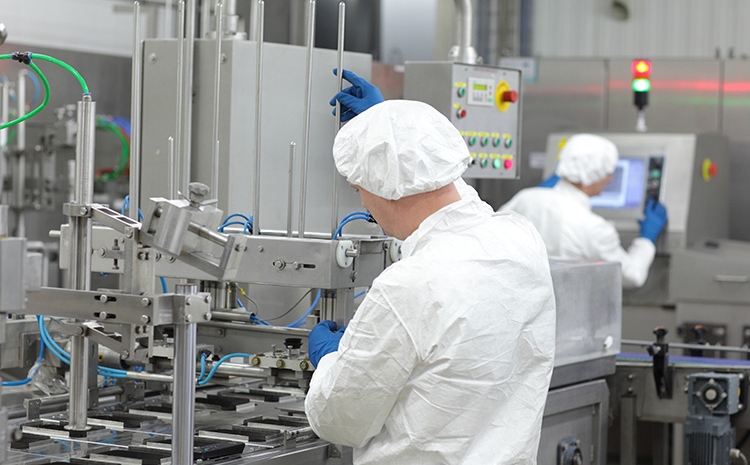Manufacturing and Technology Launching
Manufacturing Tracking
Manufacturing reporting could be done at various detailed levels (business unit, wave, order detail, semi-finished product, operation, person), with or without affecting the logistics and the stock accounting, according to the specifics of each manufacturing type/internal organisation mode.
The quality control could be done by recording the inspection types within an inspection plan. For each inspection type, data could be recorded related to their scheduling (requesting wave, assigned QA resource, proposed date and time) and the inspection results (compliance, measurement results).
The data regarding the execution progress could be centralised at the end product/order level in the manufacturing plan (MRP), the planned levels are compared to the actual ones, and the potential resource rescheduling is executed for the next period. The updated plan is considered in the detailed manufacturing schedule for the same period.
The manufacturing reporting interfaces are available on three technology platforms:
Strategic Tracking
Based on the execution technology and a calculation model, the pre-calculated prices of the products could be calculated, and these could be considered when creating offers, for the calculation of the inventory entry price or for updating the price lists.
The end goal of the manufacturing workflow is got in the post-calculation by allocating the overhead by direct cost centres, and the possibility to compare the budget/actual costs at accounting period level, and also the margin (total revenue - expenses) at cost centre level.

- Depending on the manufacturing type, launching could be done based on MPS (sales plan/manufacturing plan), sales orders or on hand, by generating internal manufacturing orders.
- The manufacturing technologies could be documents such as standard layout (for the mass manufacturing) or manufacturing workflow (specific technologies by order or retrieved from pre-existing layouts adapted to the order).The technologies could be simple (recipe type) or complex (product/project hierarchy structure), composite (e.g. Complex product assembly) or decomposing (disassembly, e.g. disjoint), primary (multiple layout documents could be validly related to the same product at the same time, of which only one is the primary one).
- In case of end products, identified by property values (e.g. light industry - clothes or footwear – significant properties such as Size, Measure, Colour, Shipping country), besides the resource norms depending on these properties’ values, also the relations of these values are managed for the end product and the related components (compatibility rules).
- The manufacturing workflows are the basis to generate the resource technology requisitions (raw material, labour, equipment consumption) used on the further integrated business flows.
Manufacturing Tracking
Manufacturing reporting could be done at various detailed levels (business unit, wave, order detail, semi-finished product, operation, person), with or without affecting the logistics and the stock accounting, according to the specifics of each manufacturing type/internal organisation mode.
The quality control could be done by recording the inspection types within an inspection plan. For each inspection type, data could be recorded related to their scheduling (requesting wave, assigned QA resource, proposed date and time) and the inspection results (compliance, measurement results).
The data regarding the execution progress could be centralised at the end product/order level in the manufacturing plan (MRP), the planned levels are compared to the actual ones, and the potential resource rescheduling is executed for the next period. The updated plan is considered in the detailed manufacturing schedule for the same period.
The manufacturing reporting interfaces are available on three technology platforms:
- Reporting documents operating in back-office (on workstations, with the Charisma client component installed);
- Operating on touch-screen workstations with intranet access, mounted in the manufacturing floors – operating is mainly done by scanning barcodes (operator, equipment, operation), pressing touch buttons and editing figures (quantities);
- Reporting documents operating in front-office, with access to the database via web services (on mobile devices, with Production Mobile component installed);
Strategic Tracking
Based on the execution technology and a calculation model, the pre-calculated prices of the products could be calculated, and these could be considered when creating offers, for the calculation of the inventory entry price or for updating the price lists.
The end goal of the manufacturing workflow is got in the post-calculation by allocating the overhead by direct cost centres, and the possibility to compare the budget/actual costs at accounting period level, and also the margin (total revenue - expenses) at cost centre level.


